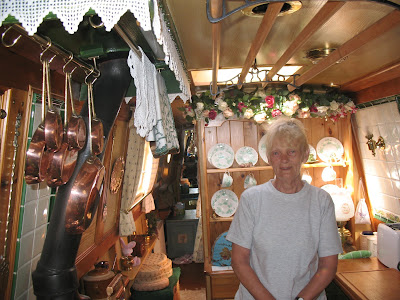

 From top: Jane Bailey with Manuel Ferrer of Achaval Ferrer, maker of some of the most highly regarded wines ever produced in the Western Hemisphere.
From top: Jane Bailey with Manuel Ferrer of Achaval Ferrer, maker of some of the most highly regarded wines ever produced in the Western Hemisphere.The cover story in the Nov. 21 New York Times Travel section is on Mendoza, the celebrated wine region in western Argentina. It was written by Alexi Barrionuevo and it reminded me just how much I enjoyed a visit there a few years ago. The column on the right side of this blog also has an item on Mendoza.
Mendoza is the name of the province and the province's main city. The malbec grape, which is also the grape in Cahors wine from France, thrives in Mendoza's desert climate. Water for irrigation comes from snow melt in the Andes, which often look close enough to touch in photos of Mendoza's vineyards.
If you're planning a visit, be sure to include Vines of Mendoza (in the city of Mendoza) on your itinerary. It was the first collective wine shop in Mendoza. It holds wine tastings, classes, seminars, events and special vintner gatherings. It offers several flights of the region's wines. It also offers a tour service, setting up a unique wine itinerary based on your interests. With a day's notice, appointments can be set up for you at each winery you want to visit and a car and driver can be found for you. There's no fee for Vines of Mendoza to plan the trip and make the appointments, and a car with a driver for a day will cost you about 200 Argentine pesos (about $50). Most wineries offer free tours and often free tastings, but appointments are required. You can also rent cars in Mendoza, but an amazing lack of road signs makes it a confusing place to drive.
When my wife and I visited Mendoza in 2007, we stayed at Club Tapiz, a delightful vineyard inn outside town. It has a nice pool, a really good restaurant and spa services. We had hired a driver for our entire stay in Mendoza, so the inn's rather isolated location wasn't a problem. If you'll be without a car, you might want to stay in the city, perhaps at a place like the elegant Mendoza Park Hyatt. A much, much less expensive choice would be hostels. If your budget is somewhere between the Park Hyatt and a hostel, try Tripadvisor for a number of moderately priced places.
Wherever you stay, you should plan to have dinner one night at Francis Mallmann's 1884 restaurant in the Bodega Escorihuela winery. It often appears on lists of the best restaurants in the world. Salted chicken prepared on an outdoor wood-burning stove, baby goat (cheivito) and young pork (lechón) are among the most recommended dishes. Whatever your main dish, order a bottle of malbec.

























